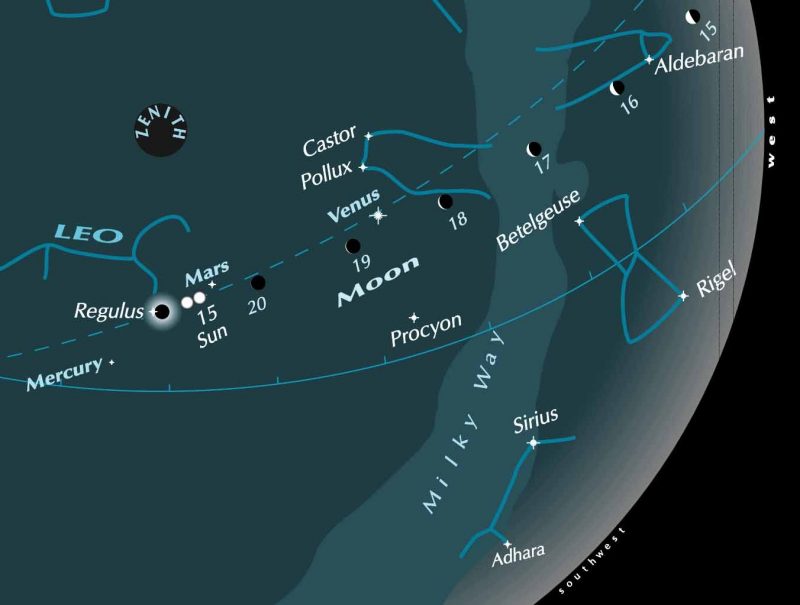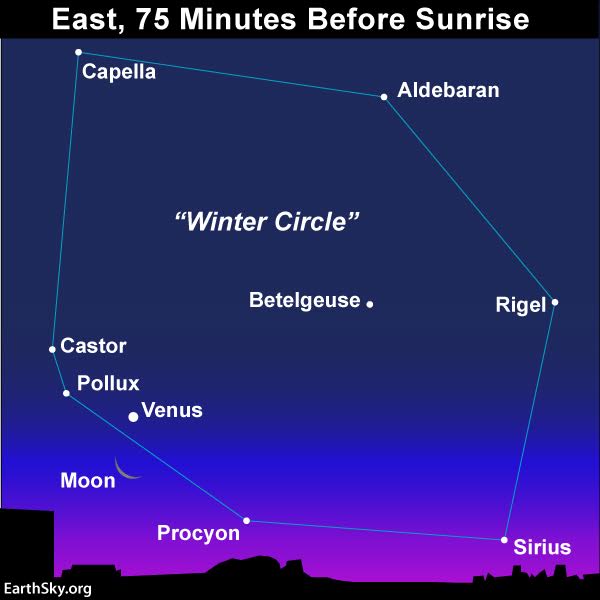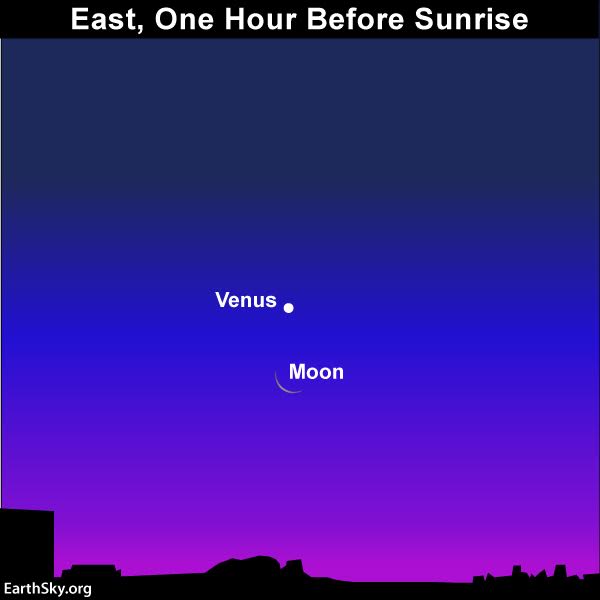Maybe you saw the waning crescent moon and dazzling planet Venus on the morning of August 18, 2017? They pair up again in the east before sunrise on August 19. These two celestial beauties – the moon and Venus – rank as the second-brightest and third-brightest heavenly bodies to light up the sky, after the sun. They’ll be hard to miss!
The lit portion of a waning crescent moon always points toward the sun. The lit side of a waning moon also points in the moon’s direction of travel: eastward, in orbit around Earth. At each new moon, the moon passes (more or less) between the Earth and sun, to leave the morning sky and enter the evening sky. More often than not, however, the new moon sweeps to the north or south of the sun, so there is usually no solar eclipse at new moon.
Why no eclipse every full and new moon?
Enter your zip code to learn how much of the August 21 eclipse you’ll see, and what time
But this year, in 2017, the February and August new moons stand as exceptions. In fact, the upcoming new moon will swing directly in front of the sun, to present a total eclipse of the sun on August 21, 2017.

If you’re up and about before morning dawn, you can use the moon and Venus to help direct you to the constellation Gemini’s two brightest stars, Castor and Pollux.
From there, you might even be able to star-hop through the stars of the Winter Circle, the great big lasso of brilliant stars illuminating the predawn/dawn sky.
On August 19, as darkness is giving way to dawn, it might be hard to catch the stars Sirius and Procyon near the horizon from northerly latitudes. Even so, it won’t be much longer until the harbinger of the cold season, the Winter Circle, fills your eastern sky before dawn.

Bottom line: On August 19, before dawn, watch the moon waning eclipse-ward. The bright object nearby is the planet Venus. Then let the moon and Venus serve as your guides to the Winter Circle, the first sign of winter in the late-summer morning sky.












